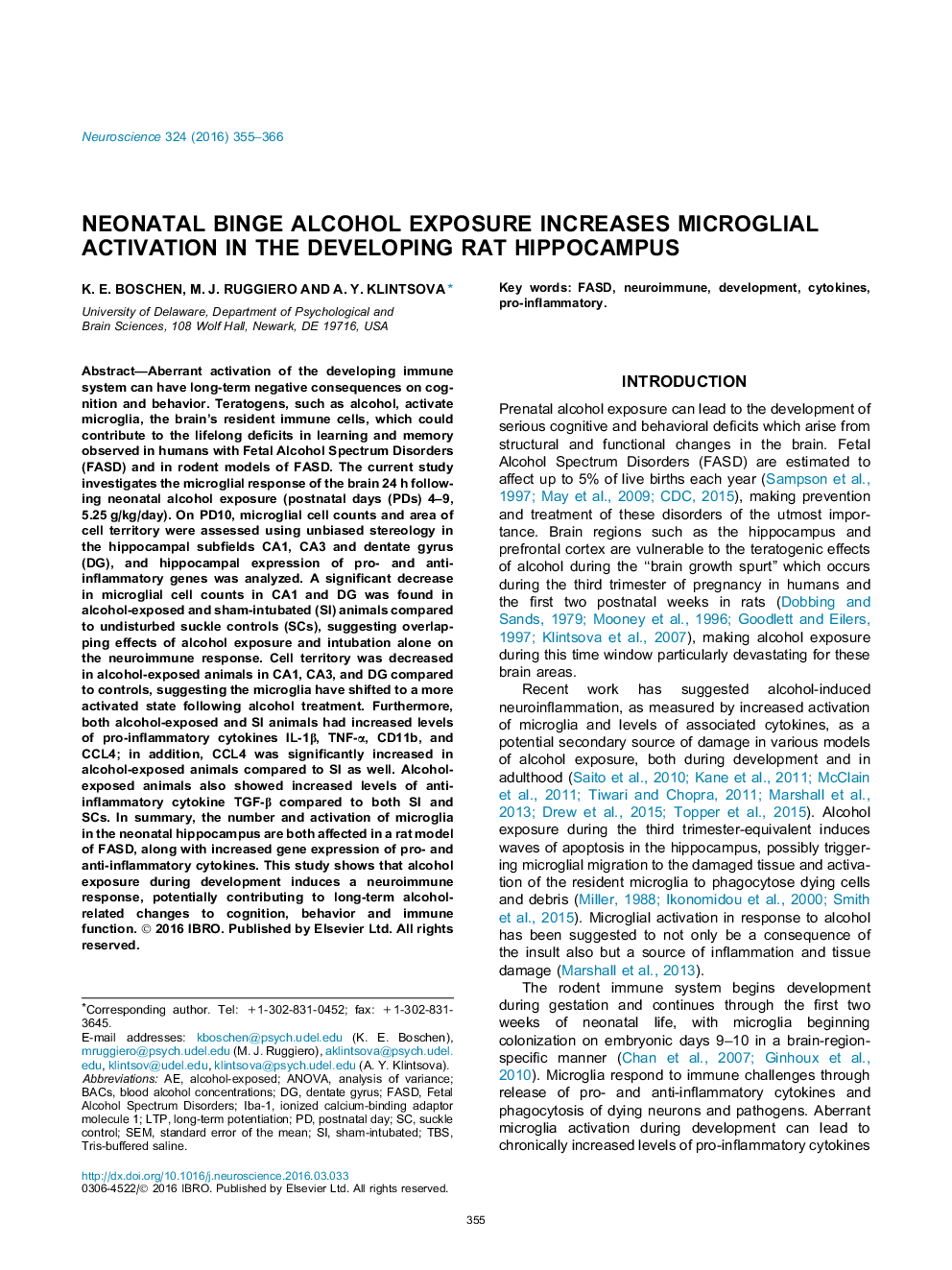| کد مقاله | کد نشریه | سال انتشار | مقاله انگلیسی | نسخه تمام متن |
|---|---|---|---|---|
| 4337330 | 1614752 | 2016 | 12 صفحه PDF | دانلود رایگان |
• We use a rat model of third trimester-equivalent binge alcohol-exposed (AE).
• We investigated microglia number and activation state in the neonatal hippocampus.
• Both AE and intubation (SI) decreased microglial number in CA1 and dentate gyrus.
• AE decreased microglial territory in CA1, CA3 and DG due to increased activation.
• AE increased CCL4 and TGF-β, while AE and SI increased IL-1β, TNF-α and CD11b.
Aberrant activation of the developing immune system can have long-term negative consequences on cognition and behavior. Teratogens, such as alcohol, activate microglia, the brain’s resident immune cells, which could contribute to the lifelong deficits in learning and memory observed in humans with Fetal Alcohol Spectrum Disorders (FASD) and in rodent models of FASD. The current study investigates the microglial response of the brain 24 h following neonatal alcohol exposure (postnatal days (PDs) 4–9, 5.25 g/kg/day). On PD10, microglial cell counts and area of cell territory were assessed using unbiased stereology in the hippocampal subfields CA1, CA3 and dentate gyrus (DG), and hippocampal expression of pro- and anti-inflammatory genes was analyzed. A significant decrease in microglial cell counts in CA1 and DG was found in alcohol-exposed and sham-intubated (SI) animals compared to undisturbed suckle controls (SCs), suggesting overlapping effects of alcohol exposure and intubation alone on the neuroimmune response. Cell territory was decreased in alcohol-exposed animals in CA1, CA3, and DG compared to controls, suggesting the microglia have shifted to a more activated state following alcohol treatment. Furthermore, both alcohol-exposed and SI animals had increased levels of pro-inflammatory cytokines IL-1β, TNF-α, CD11b, and CCL4; in addition, CCL4 was significantly increased in alcohol-exposed animals compared to SI as well. Alcohol-exposed animals also showed increased levels of anti-inflammatory cytokine TGF-β compared to both SI and SCs. In summary, the number and activation of microglia in the neonatal hippocampus are both affected in a rat model of FASD, along with increased gene expression of pro- and anti-inflammatory cytokines. This study shows that alcohol exposure during development induces a neuroimmune response, potentially contributing to long-term alcohol-related changes to cognition, behavior and immune function.
Journal: Neuroscience - Volume 324, 2 June 2016, Pages 355–366
